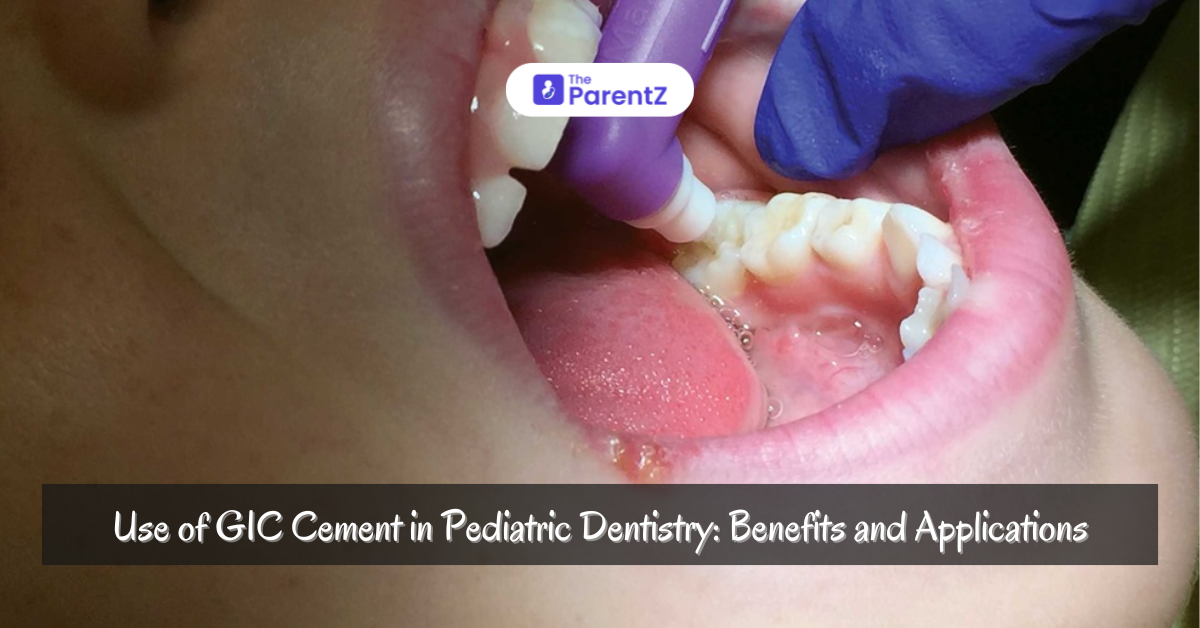Glass Ionomer Cement (GIC) has become a widely used material in pediatric dentistry due to its unique properties. Its biocompatibility, fluoride-releasing ability, and ease of application make it especially suitable for treating children’s teeth. As dental treatments in children often involve managing primary teeth, which are more susceptible to decay, GIC offers a practical solution to safeguard oral health. In this article, we explore the advantages of GIC cement for children, its applications, and how it differs from other dental cements commonly used in pediatric care.
What is GIC Cement?
Glass Ionomer Cement (GIC) is a dental restorative material that bonds chemically to both the tooth and bone. It is composed of an aqueous solution of polyacrylic acid and a fine glass powder made of calcium-alumino-silicate. This unique composition not only enhances the bonding capability of GIC but also allows it to release fluoride over time, providing an additional layer of protection against dental caries in children.
Key Benefits of GIC Cement in Pediatric Dentistry
1. Fluoride Release
One of the standout features of GIC is its ability to release fluoride. In pediatric patients, where decay prevention is paramount, the slow release of fluoride helps remineralize tooth structure and prevent the progression of caries. This added protection is especially useful in children who may not maintain optimal oral hygiene.
2. Biocompatibility
GIC is known for its excellent biocompatibility. Unlike some other materials, it does not irritate the surrounding soft tissues or cause allergic reactions, making it a safer option for children. Its compatibility with the tooth structure also helps minimize post-operative sensitivity.
3. Adhesion to Tooth Structure
GIC chemically bonds to the enamel and dentin without the need for additional bonding agents. This property ensures a strong, long-lasting seal, which is particularly beneficial in primary teeth that may not have fully developed yet. Moreover, GIC requires minimal tooth preparation, making it less invasive for children.
4. Moisture Tolerance
Unlike some other dental cements, GIC can tolerate moisture during placement. This is a significant advantage when treating children, who may find it difficult to sit still for extended periods or keep their mouths completely dry during procedures. GIC’s ability to function well in slightly moist environments ensures a reliable outcome even under challenging conditions.
Common Applications of GIC in Children
1. Cavity Fillings
GIC is commonly used for fillings in children, particularly for small to medium-sized cavities. Its fluoride release and bond strength make it ideal for preventing further decay in vulnerable teeth.
2. Luting Cement for Crowns and Bridges
In cases where crowns or space maintainers are required, GIC is often the luting agent of choice due to its excellent adhesive properties and durability.
3. Fissure Sealants
GIC can be used as a fissure sealant in molars, preventing food particles and bacteria from getting lodged in the deep grooves of children’s teeth. The slow release of fluoride adds an extra level of caries protection.
4. Base and Liner Applications
GIC is also used as a base material under composite restorations or as a liner in deep cavities, where it helps protect the pulp and seals the dentin against bacterial penetration.
How GIC Differs from Other Dental Cements
- Compared to Resin-Based Composites
While resin-based composites offer excellent aesthetic outcomes, they require a dry field during placement and do not release fluoride. In pediatric dentistry, where fluoride release is crucial for preventing decay, GIC holds a distinct advantage. Moreover, resin composites need additional bonding agents, while GIC bonds directly to the tooth.
- Compared to Zinc Oxide Eugenol (ZOE)
Zinc Oxide Eugenol is another common cement used in pediatric dentistry, often for temporary restorations. However, ZOE lacks the fluoride-releasing capability of GIC and is not as durable for long-term applications. GIC’s strength and caries-preventive properties make it the superior option for permanent restorations.
- Compared to Amalgam
Though amalgam is durable and has been used for decades, it lacks the aesthetic qualities and fluoride-releasing benefits of GIC. Moreover, the use of amalgam in children is declining due to concerns about mercury content, making GIC a safer and more attractive alternative for pediatric use.
Conclusion:
Glass Ionomer Cement (GIC) offers a variety of advantages in pediatric dentistry, including fluoride release, biocompatibility, and ease of use in less-than-ideal conditions. Its ability to chemically bond to tooth structures with minimal preparation makes it particularly suited for young patients who require quick, non-invasive treatments. While other dental cements have their own specific uses, GIC stands out for its preventive and restorative capabilities, making it an indispensable material in managing children’s dental health. By choosing GIC, dental professionals can provide long-lasting, protective solutions that benefit children's oral health well into the future.






